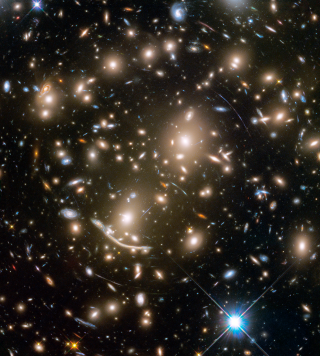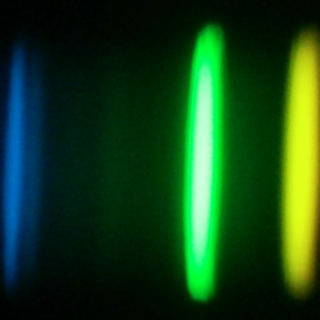Bibcode
Cenarro, A. J.; Moles, M.; Cristóbal-Hornillos, D.; Marín-Franch, A.; Ederoclite, A.; Varela, J.; López-Sanjuan, C.; Hernández-Monteagudo, C.; Angulo, R. E.; Vázquez Ramió, H.; Viironen, K.; Bonoli, S.; Orsi, A. A.; Hurier, G.; San Roman, I.; Greisel, N.; Vilella-Rojo, G.; Díaz-García, L. A.; Logroño-García, R.; Gurung-López, S.; Spinoso, D.; Izquierdo-Villalba, D.; Aguerri, J. A. L.; Allende Prieto, C.; Bonatto, C.; Carvano, J. M.; Chies-Santos, A. L.; Daflon, S.; Dupke, R. A.; Falcón-Barroso, J.; Gonçalves, D. R.; Jiménez-Teja, Y.; Molino, A.; Placco, V. M.; Solano, E.; Whitten, D. D.; Abril, J.; Antón, J. L.; Bello, R.; Bielsa de Toledo, S.; Castillo-Ramírez, J.; Chueca, S.; Civera, T.; Díaz-Martín, M. C.; Domínguez-Martínez, M.; Garzarán-Calderaro, J.; Hernández-Fuertes, J.; Iglesias-Marzoa, R.; Iñiguez, C.; Jiménez Ruiz, J. M.; Kruuse, K.; Lamadrid, J. L.; Lasso-Cabrera, N.; López-Alegre, G.; López-Sainz, A.; Maícas, N.; Moreno-Signes, A.; Muniesa, D. J.; Rodríguez-Llano, S.; Rueda-Teruel, F.; Rueda-Teruel, S.; Soriano-Laguía, I.; Tilve, V.; Valdivielso, L.; Yanes-Díaz, A.; Alcaniz, J. S.; Mendes de Oliveira, C.; Sodré, L.; Coelho, P.; Lopes de Oliveira, R.; Tamm, A.; Xavier, H. S.; Abramo, L. R.; Akras, S.; Alfaro, E. J.; Alvarez-Candal, A.; Ascaso, B.; Beasley, M. A.; Beers, T. C.; Borges Fernandes, M.; Bruzual, G. R.; Buzzo, M. L.; Carrasco, J. M.; Cepa, J.; Cortesi, A.; Costa-Duarte, M. V.; De Prá, M.; Favole, G.; Galarza, A.; Galbany, L.; Garcia, K.; González Delgado, R. M.; González-Serrano, J. I.; Gutiérrez-Soto, L. A.; Hernandez-Jimenez, J. A.; Kanaan, A.; Kuncarayakti, H.; Landim, R. C. G.; Laur, J.; Licandro, J. et al.
Bibliographical reference
Astronomy and Astrophysics, Volume 622, id.A176, 25 pp.
Advertised on:
2
2019
Journal
Citations
250
Refereed citations
212
Description
The Javalambre Photometric Local Universe Survey (J-PLUS ) is an ongoing
12-band photometric optical survey, observing thousands of square
degrees of the Northern Hemisphere from the dedicated JAST/T80 telescope
at the Observatorio Astrofísico de Javalambre (OAJ). The T80Cam
is a camera with a field of view of 2 deg2 mounted on a
telescope with a diameter of 83 cm, and is equipped with a unique system
of filters spanning the entire optical range (3500-10 000 Å). This
filter system is a combination of broad-, medium-, and narrow-band
filters, optimally designed to extract the rest-frame spectral features
(the 3700-4000 Å Balmer break region, Hδ, Ca H+K, the G
band, and the Mg b and Ca triplets) that are key to characterizing
stellar types and delivering a low-resolution photospectrum for each
pixel of the observed sky. With a typical depth of AB ˜21.25 mag
per band, this filter set thus allows for an unbiased and accurate
characterization of the stellar population in our Galaxy, it provides an
unprecedented 2D photospectral information for all resolved galaxies in
the local Universe, as well as accurate photo-z estimates (at the
δ z/(1 + z)˜0.005-0.03 precision level) for moderately
bright (up to r ˜ 20 mag) extragalactic sources. While some
narrow-band filters are designed for the study of particular emission
features ([O II]/λ3727, Hα/λ6563) up to z <
0.017, they also provide well-defined windows for the analysis of other
emission lines at higher redshifts. As a result, J-PLUS has the
potential to contribute to a wide range of fields in Astrophysics, both
in the nearby Universe (Milky Way structure, globular clusters, 2D
IFU-like studies, stellar populations of nearby and moderate-redshift
galaxies, clusters of galaxies) and at high redshifts (emission-line
galaxies at z ≈ 0.77, 2.2, and 4.4, quasi-stellar objects, etc.).
With this paper, we release the first ˜1000 deg2 of
J-PLUS data, containing about 4.3 million stars and 3.0 million galaxies
at r < 21 mag. With a goal of 8500 deg2 for the total
J-PLUS footprint, these numbers are expected to rise to about 35 million
stars and 24 million galaxies by the end of the survey.
Related projects

Galaxy Evolution in Clusters of Galaxies
Galaxies in the universe can be located in different environments, some of them are isolated or in low density regions and they are usually called field galaxies. The others can be located in galaxy associations, going from loose groups to clusters or even superclusters of galaxies. One of the foremost challenges of the modern Astrophysics is to
Jairo
Méndez Abreu

Traces of Galaxy Formation: Stellar populations, Dynamics and Morphology
We are a large, diverse, and very active research group aiming to provide a comprehensive picture for the formation of galaxies in the Universe. Rooted in detailed stellar population analysis, we are constantly exploring and developing new tools and ideas to understand how galaxies came to be what we now observe.
Anna
Ferré Mateu

Small Bodies of the Solar System
This project studies the physical and compositional properties of the so-called minor bodies of the Solar System, that includes asteroids, icy objects, and comets. Of special interest are the trans-neptunian objects (TNOs), including those considered the most distant objects detected so far (Extreme-TNOs or ETNOs); the comets and the comet-asteroid
Julia de
León Cruz

Chemical Abundances in Stars
Stellar spectroscopy allows us to determine the properties and chemical compositions of stars. From this information for stars of different ages in the Milky Way, it is possible to reconstruct the chemical evolution of the Galaxy, as well as the origin of the elements heavier than boron, created mainly in stellar interiors. It is also possible to
Carlos
Allende Prieto

Evolution of Galaxies
Galaxy evolution is a crucial topic in modern extragalactic astrophysics, linking cosmology to the Local Universe. Their study requires collecting statistically significant samples of galaxies of different luminosities at different distances. It implies the ability to observe faint objects using different techniques, and at different wavelengths
Jorge
Cepa Nogue